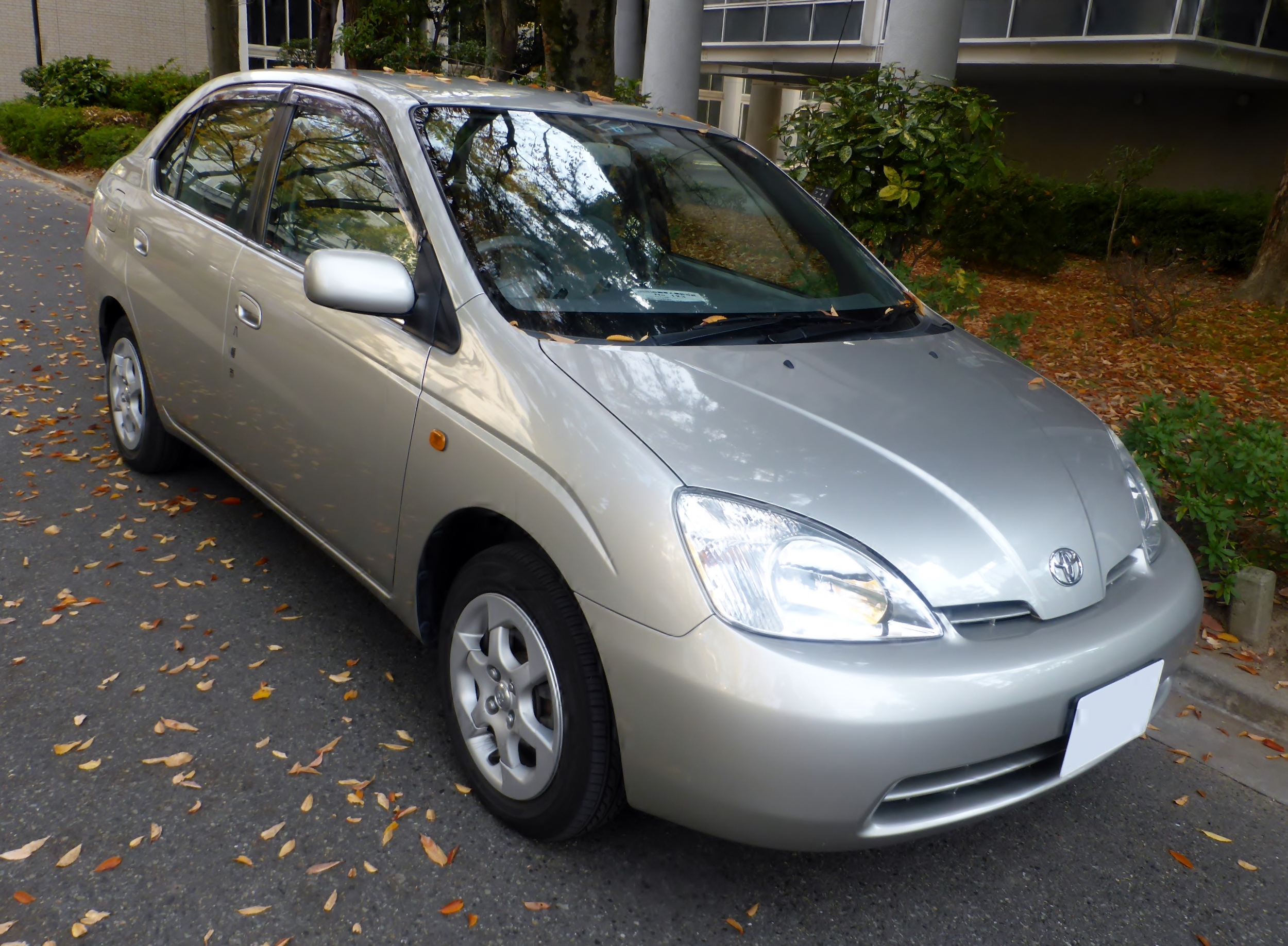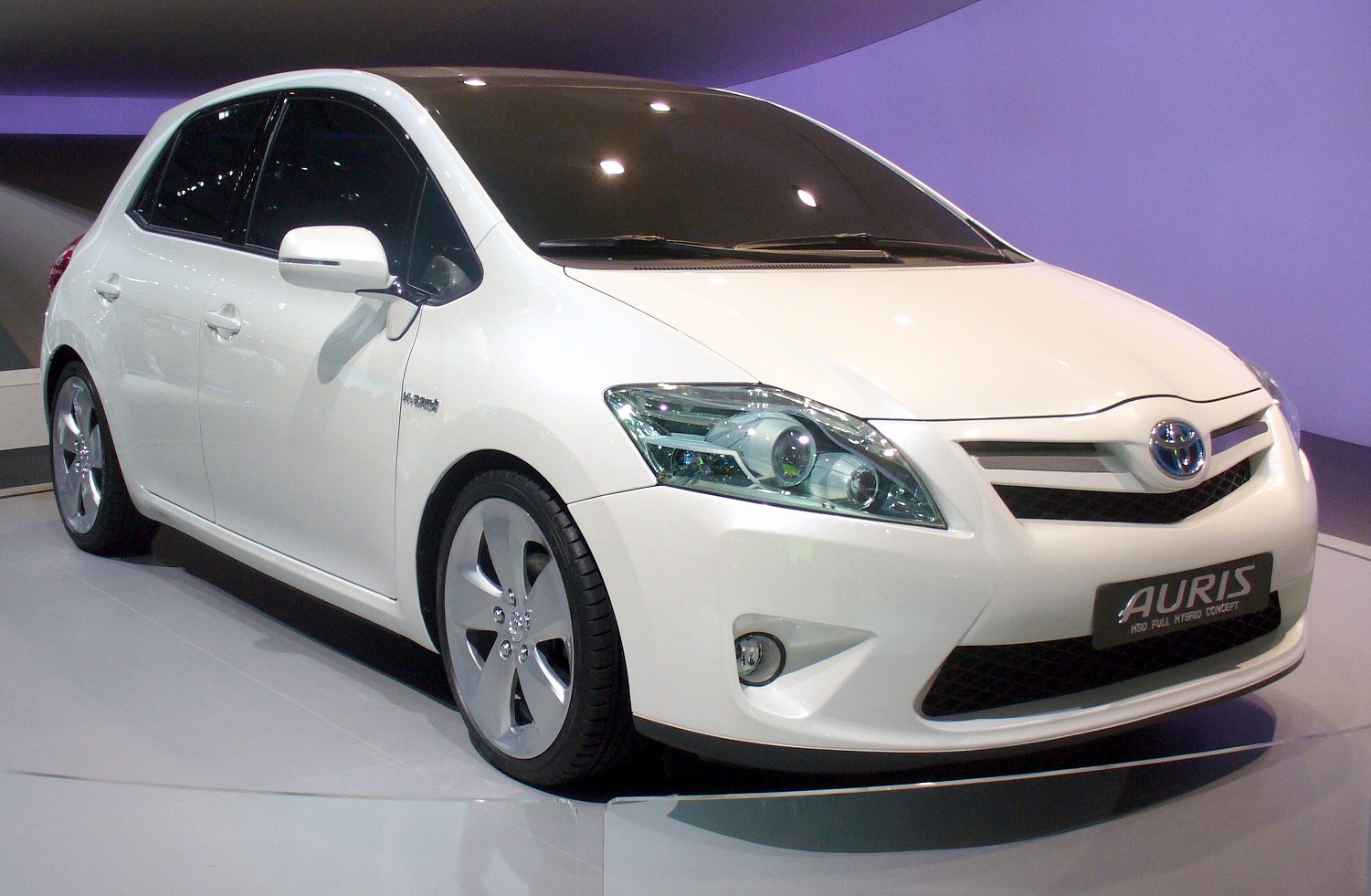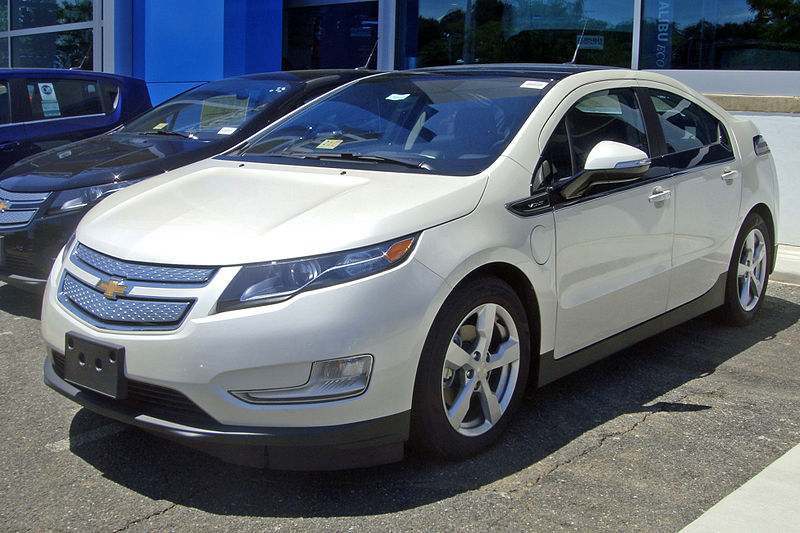
Toyota PRIUS
A hybrid electric vehicle (HEV) is a type of hybrid vehicle and electric vehicle that combines a conventional internal combustion engine (ICE) system with an electric propulsion system (hybrid vehicle drive-train). The presence of the electric power-train is intended to achieve either better fuel economy than a conventional vehicle or better performance. There is a variety of HEV types, and the degree to which each functions as an electric vehicle (EV) also varies. The most common form of HEV is the hybrid electric car, although hybrid electric trucks (pickups and tractors) and buses also exist.
Modern HEVs make use of efficiency-improving technologies such as regenerative brakes convert the vehicle’s kinetic energy to electric energy to charge the battery. Some varieties of HEV use their internal combustion engine to generate electricity by spinning an electrical generator to either recharge their batteries or to directly power the electric drive motors; this combination is known as a motor-generator. Many HEVs reduce idle emission by shutting down the ICE at idle and restarting it when needed; this is known as a start-stop system. A hybrid-electric produces less emissions from its ICE than a comparably sized gasoline car, since an HEV’s gasoline engine is usually smaller than a comparably sized, pure gasoline-burning, vehicle and if not used to directly drive the car, can be geared to run at maximum efficiency, further improving fuel economy. (Natural gas and propane fuels produce fewer emissions).

Toyota Auris HSD Hybrid
Although Ferdinand Porsche developed the Lohner-Porsche in 1901, hybrid electric vehicles did not become widely available until the release of the Toyota Prius in Japan in 1997, followed by the Honda Insight in 1999.[2] While initially perceived as unnecessary due to the low cost of gasoline, worldwide increases in the price of petroleum caused many automakers to release hybrids in the late 2000s; they are now perceived as a core segment of the automotive market of the future.
As of January 2017, over 12 million hybrid electric vehicles have been sold worldwide since their inception in 1997. As of April 2016, Japan ranked as the market leader with more than 5 million hybrids sold, followed by the United States with cumulative sales of over 4 million units since 1999, and Europe with about 1.5 million hybrids delivered since 2000. Japan also has the world’s highest hybrid market penetration. In 2016 the hybrid market share accounted for 38% of new standard passenger car sales, and 25.7% of new passenger vehicle sales including kei cars. Norway ranks second with a hybrid market share of 6.9% of new car sales in 2014, followed by the Netherlands with 3.7%, France and Sweden, both with 2.3%.
Global sales are led by the Toyota Motor Company with more than 10 million Lexus and Toyota hybrids sold as of January 2017, followed by Honda Motor Co., Ltd. with cumulative global sales of more than 1.35 million hybrids as of June 2014; Ford Motor Corporation with over 424,000 hybrids sold in the United States through June 2015; and the Hyundai Group with cumulative global sales of 200,000 hybrids as of March 2014, including both Hyundai Motor Company and Kia Motors hybrid models. As of January 2017, worldwide hybrid sales are led by the Toyota Prius liftback, with cumulative sales of almost 4 million units. The Prius name-plate had sold more than 6 million hybrids up to January 2017. Global Lexus hybrid sales achieved the 1 million unit milestone in March 2016. As of January 2017, the conventional Prius is the all-time best-selling hybrid car in both Japan and the U.S., with sales of over 1.8 million in Japan and 1.75 million in the United States.
Hybrid electric vehicles can be classified according to the following ways:
Types of power-train
Hybrid electric vehicles can be classified according to the way in which power is supplied to the drive-train:
- In parallel hybrids, the ICE and the electric motor are both connected to the mechanical transmission and can simultaneously transmit power to drive the wheels, usually through a conventional transmission. Honda’s Integrated Motor Assist (IMA) system as found in the Insight, Civic, Accord, as well as the GM Belted Alternator/Starter (BAS Hybrid) system found in the Chevrolet Malibu hybrids are examples of production parallel hybrids.[20] The internal combustion engine of many parallel hybrids can also act as a generator for supplemental recharging. Currently, commercialized parallel hybrids use a full size combustion engine with a single, small (<20 kW) electric motor and small battery pack as the electric motor is designed to supplement the main engine, not to be the sole source of motive power from launch. Parallel hybrids are more efficient than comparable non-hybrid vehicles especially during urban stop-and-go conditions where the electric motor is permitted to contribute,and during highway operation.
- In series hybrids, only the electric motor drives the drivetrain, and a smaller ICE works as a generator to power the electric motor or to recharge the batteries. They also usually have a larger battery pack than parallel hybrids, making them more expensive. Once the batteries are low, the small combustion engine can generate power at its optimum settings at all times, making them more efficient in extensive city driving.
- Power-split hybrids have the benefits of a combination of series and parallel characteristics. As a result, they are more efficient overall, because series hybrids tend to be more efficient at lower speeds and parallel tend to be more efficient at high speeds; however, the cost of power-split hybrid is higher than a pure parallel. Examples of power-split (referred to by some as “series-parallel”) hybrid power-trains include current models of Ford, General Motors,Lexus, Nissan, and Toyota.
In each of the hybrids above, it is common to use regenerative braking to recharge the batteries.
Types by degree of hybridization
- Full hybrid, sometimes also called a strong hybrid, is a vehicle that can run on just the engine, just the batteries, or a combination of both. Ford’s hybrid system, Toyota’s Hybrid Synergy Drive and General Motors/Chrysler’s Two-Mode Hybrid technologies are full hybrid systems. The Toyota Prius, Ford Escape Hybrid, and Ford Fusion Hybrid are examples of full hybrids, as these cars can be moved forward on battery power alone. A large, high-capacity battery pack is needed for battery-only operation. These vehicles have a split power path allowing greater flexibility in the drivetrain by interconverting mechanical and electrical power, at some cost in complexity.
- Mild hybrid, is a vehicle that cannot be driven solely on its electric motor, because the electric motor does not have enough power to propel the vehicle on its own. Mild hybrids only include some of the features found in hybrid technology, and usually achieve limited fuel consumption savings, up to 15 percent in urban driving and 8 to 10 percent overall cycle. A mild hybrid is essentially a conventional vehicle with oversize starter motor, allowing the engine to be turned off whenever the car is coasting, braking, or stopped, yet restart quickly and cleanly. The motor is often mounted between the engine and transmission, taking the place of the torque converter, and is used to supply additional propulsion energy when accelerating. Accessories can continue to run on electrical power while the gasoline engine is off, and as in other hybrid designs, the motor is used for regenerative braking to recapture energy. As compared to full hybrids, mild hybrids have smaller batteries and a smaller, weaker motor/generator, which allows manufacturers to reduce cost and weight.
- Honda’s early hybrids including the first generation Insight used this design, leveraging their reputation for design of small, efficient gasoline engines; their system is dubbed Integrated Motor Assist (IMA). Starting with the 2006 Civic Hybrid, the IMA system now can propel the vehicle solely on electric power during medium speed cruising. Another example is the 2005–2007 Chevrolet Silverado Hybrid, a full-size pickup truck. Chevrolet was able to get a 10% improvement on the Silverado’s fuel efficiency by shutting down and restarting the engine on demand and using regenerative braking. General Motors has also used its mild BAS Hybrid technology in other models such as theSaturn Vue Green Line, the Saturn Aura Greenline and the Malibu Hybrid.
Plug-in hybrids (PHEVs)

Chevrolet Volt (Plug-in-Hybrid)
A plug-in hybrid electric vehicle (PHEV), also known as a plug-in hybrid, is a hybrid electric vehicle with rechargeable batteries that can be restored to full charge by connecting a plug to an external electric power source. A PHEV shares the characteristics of both a conventional hybrid electric vehicle, having an electric motor and an internal combustion engine; and of an all-electric vehicle, also having a plug to connect to the electrical grid. PHEVs have a much larger all-electric range as compared to conventional gasoline-electric hybrids, and also eliminate the “range anxiety” associated with all-electric vehicles, because the combustion engine works as a backup when the batteries are depleted.
Chinese battery manufacturer and automaker BYD Auto released the F3DM PHEV-62 (PHEV-100 km) hatchback to the Chinese fleet market on December 15, 2008, for 149,800 yuan (US $22,000).[26][27] General Motors launched the 2011Chevrolet Volt series plug-in in December 2010.[28][29] At the time, the Volt displaced the Toyota Prius as the most fuel-efficient car sold in the United States.
As of December 2016, the Volt/Ampera family is the world’s all-time best-selling plug-in hybrid car, with global sales totaling about 134,500 units since its inception, including over 10,000 Opel/Vauxhall Amperas sold in Europe. The Mitsubishi Outlander P-HEV ranks second with about 119,500 units delivered worldwide. Third is the Toyota Prius Plug-in Hybrid with cumulative global sales of 79,300 units at the end of January 2017.
Source: wikipedia
